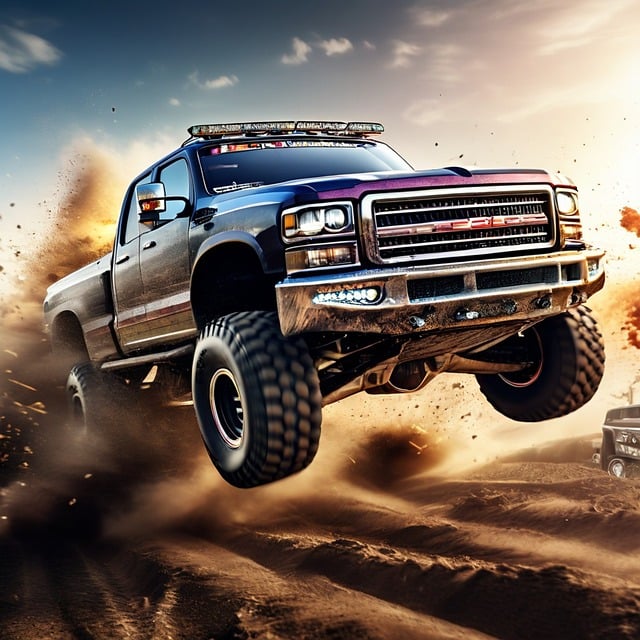Receiver hitches are essential accessories for Pharr 4×4 owners, enabling secure towing of trailers and cargo. Regular inspections and prompt repairs, focusing on wiring integrity and bracket strength, are vital for safety. A methodical approach to Pharr 4×4 repair includes identifying issues, sourcing compatible parts, and ensuring vehicle stability after repairs. Choosing the right hitch based on vehicle class, towing needs, compatibility, and maintenance practices is key to optimal performance. Regular maintenance, including inspection, tightening, cleaning, and lubrication, extends the lifespan of receiver hitches for enhanced Pharr 4×4 repair adventures.
“Enhance your vehicle’s towing capacity and versatility with a receiver hitch, especially tailored for off-road adventures. This article guides you through the intricacies of Pharr 4×4 receiver hitches, addressing common issues and offering practical repair steps for enhanced performance.
Learn to choose the perfect replacement hitch, ensuring seamless compatibility and durability. Through proper maintenance, extend the lifespan of your receiver hitch, making every trip a safe and reliable experience for your Pharr 4×4.”
- Understanding Receiver Hitches: A Basic Overview
- Common Issues with Pharr 4×4 Receiver Hitches
- Steps for Effective Pharr 4×4 Repair
- Choosing the Right Replacement Hitch for Your Vehicle
- Maintaining Your Receiver Hitch for Longevity
Understanding Receiver Hitches: A Basic Overview

Receiver hitches are an essential component for those who love off-road adventures and need to tow extra gear or accessories. This simple yet powerful attachment system allows vehicles, especially Pharr 4x4s, to haul trailers, cargo, or even bike racks with ease. The receiver hitch is designed to fit seamlessly into the bed of a truck or SUV, providing a secure mounting point for various accessories.
It consists of two main parts: the receiver in the vehicle’s bed and the ball mount attached to the trailer or accessory. The receiver is a metal tube with specific dimensions that accommodates the ball mount, which features a shank with a hole to insert the hitch pin. This setup ensures a sturdy connection, enabling drivers to tow heavy loads securely. For Pharr 4×4 owners looking for versatile towing solutions, understanding and mastering receiver hitches can enhance their off-road experience by opening up new possibilities for cargo carrying and adventure.
Common Issues with Pharr 4×4 Receiver Hitches

The Pharr 4×4 receiver hitch, while robust and designed for heavy-duty towing, isn’t immune to issues. One common problem is pinched or damaged wiring, often caused by improper installation or rough handling. This can lead to electrical malfunctions and, in severe cases, compromise the vehicle’s lighting system and other essential components. Regular inspections are crucial to identifying potential hazards early on, ensuring a safe and smooth ride.
Another frequent issue pertains to the hitch’s mounting brackets. Extreme stress from heavy loads or uneven road conditions can cause these brackets to weaken or become misaligned. This may result in swaying or even detachment of the trailer during tow, posing significant safety risks. Timely Pharr 4×4 repair, focusing on both wiring integrity and bracket stability, is essential for maintaining optimal performance and preventing accidents.
Steps for Effective Pharr 4×4 Repair

When tackling a Pharr 4×4 repair, a systematic approach is key to ensuring the job is done right. Start by identifying the issue—is it a flat tire, a broken axle, or a faulty differential? Gather the necessary tools and parts, double-checking compatibility with your vehicle model. Safety should be paramount, so wear protective gear, especially gloves and eye protection.
Next, lift the vehicle securely using jack stands positioned under solid points. Remove any affected wheels and components, taking note of how they are assembled for easy reassembly. Inspect the damaged area thoroughly, identifying worn parts or structural weaknesses. Replace worn components with OEM (original equipment manufacturer) parts for guaranteed quality. After repairs, lower the vehicle, tighten all bolts, and test the repair by driving at safe speeds to ensure stability and performance.
Choosing the Right Replacement Hitch for Your Vehicle

When it comes to replacing your vehicle’s hitch, choosing the right one is crucial for both safety and performance, especially for those who love off-roading in Pharr 4×4 repair shops. The first step is to identify the class of hitch you need based on your vehicle’s make, model, and year. Class I, II, and III hitches serve different towing capacities, with Class III being suitable for heavy-duty tasks like hauling trailers or large boats.
Next, consider your towing needs. If you frequently transport small trailers or bicycles, a simple and lightweight replacement might suffice. However, if you’re an avid outdoorsman who needs to tow larger equipment, invest in a hitch that offers more strength and stability. Ensure compatibility with your vehicle’s frame and check for any specific mountings or bolt patterns required by your car manufacturer.
Maintaining Your Receiver Hitch for Longevity

Regular maintenance is key to ensuring your receiver hitch lasts for years, especially if you frequently engage in Pharr 4×4 repairs and off-road adventures. Start by inspecting the hitch for any signs of wear or damage after each trip, as even small cracks or bends can compromise its integrity. Keep an eye on the bolts and pins as well; these critical components require regular tightening to maintain a secure connection between your vehicle and trailer.
A simple cleaning routine is another vital step in prolonging your receiver hitch’s lifespan. Use a mixture of warm water and mild soap to wipe down the hitch, removing any dirt, grime, or rust buildup. After cleaning, apply a generous layer of lubricant to all moving parts to prevent corrosion and facilitate smooth operation during future Pharr 4×4 repair endeavors.
Receiver hitches, especially those designed for Pharr 4×4 vehicles, are essential components that enable enhanced towing capabilities. By understanding common issues and implementing effective repair steps, you can ensure your hitch’s longevity. Choosing the right replacement hitch tailored to your vehicle is crucial for optimal performance. Regular maintenance will safeguard against wear and tear, making your Pharr 4×4 a reliable partner on any terrain. Remember, a well-maintained receiver hitch contributes significantly to a smoother towing experience.
